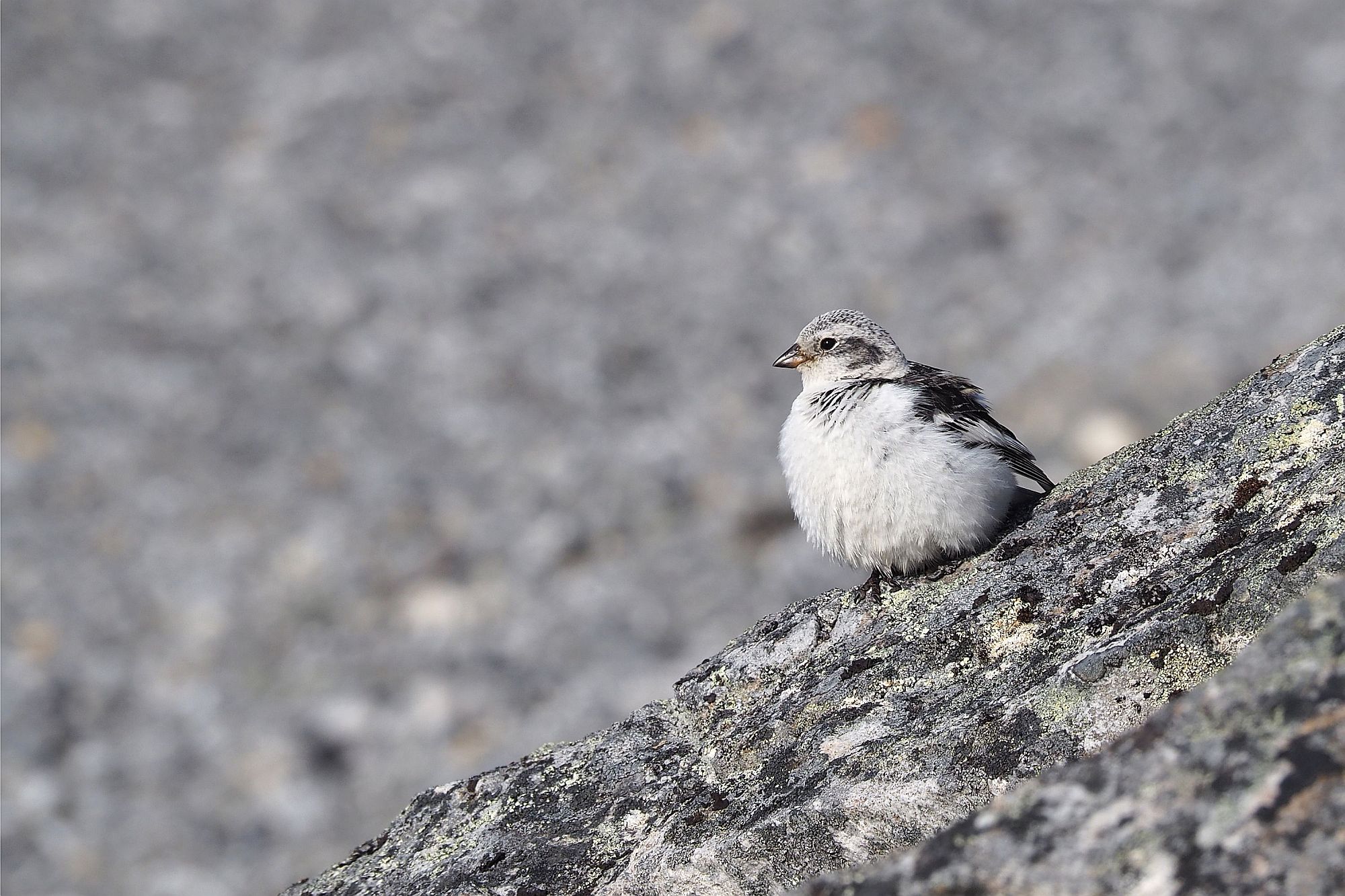With the end of March upon us, spring is already in full swing. Unless, that is, you happen to be in Svalbard, which is still white, empty and downright wintry. The islands will finally come to life when the peace and quiet of polar winter gives way to the commotion caused by many thousands of migratory birds returning, as they do each year, to their breeding grounds. But while this boisterous spectacle is still to come, the Arctic spring, which is as yet invisible, is already perfectly audible. This is because the earliest arrivals have already made it back and luck has it that they’re the archipelago’s only songbirds. They’re called snow buntings (Plectrophenax nivalis) and their vocal talent, as you probably expect, is but one of their claims to fame.
These inconspicuous-looking balls of fluff, with the most sturdy among them weighing at best 40 grams, are first-rate cold specialists. As befits real polar explorers, snow buntings are equipped with natural down outfits, which protect even their ankles and the base of the bill. Besides, the birds boast remarkable resistance to the cold. They manage alright even at -50°C and the body temperature which marks for them the onset of hypothermia is 30–40% lower than the temperature critical for related species. These adaptations, however, come at a price, because high tolerance to the cold often means limited tolerance to heat. The average July temperature exceeding 10°C is unbearably hot for the snow bunting and so it’s no wonder that – unlike most other land bird species – they have particular liking for the Arctic. Their breeding grounds cover primarily the northern edge of Canada, but Greenland and the far north of Scandinavia and Russia also feature prominently on the map of the birds’ summer distribution. According to scientific reports from the 1960s, the more adventurous individuals ventured even near the North Pole, where they made repeated attempts to nest on Soviet drifting ice stations. While it’s not clear whether any of them actually succeeded, it is quite certain that, due to the ongoing warming of the Arctic, the northern snow bunting range limits have virtually ceased to exist. The overall population of these birds is estimated at 30–40 million individuals, with 1000–10 000 pairs breeding in Svalbard.
And where do snow buntings spend the winter? In contrast to most migratory birds, which generally seek refuge in climatically milder areas, snow buntings seldom stray far from the cold. This seems especially true of their Svalbard population, which – as proven by research – overwinters in frost-bound Siberia, which is hardly an improvement over Svalbard. Scientists have, therefore, suggested that for this particular group of snow buntings, the main reason behind their migration is not so much to escape the environmental extremes of the high Arctic, but to enjoy the all-you-can-eat prime winter menu offered on the vast grasslands and croplands of Russia and Kazakhstan, which snow buntings have largely to themselves, as the weather conditions found in the area effectively scare off potential competitors. In other words, it’s quite clear that the birds do not much mind the cold and their annual journey, which they could make with their eyes closed, as they take their bearings from an inbuilt magnetic compass, is a sort of ambitious culinary tourism. Snow buntings forage on land, feeding mainly on seeds and buds, but they won’t say no to insects and other small invertebrates either, including planktonic crustaceans which, in coastal areas, get washed ashore by the waves.
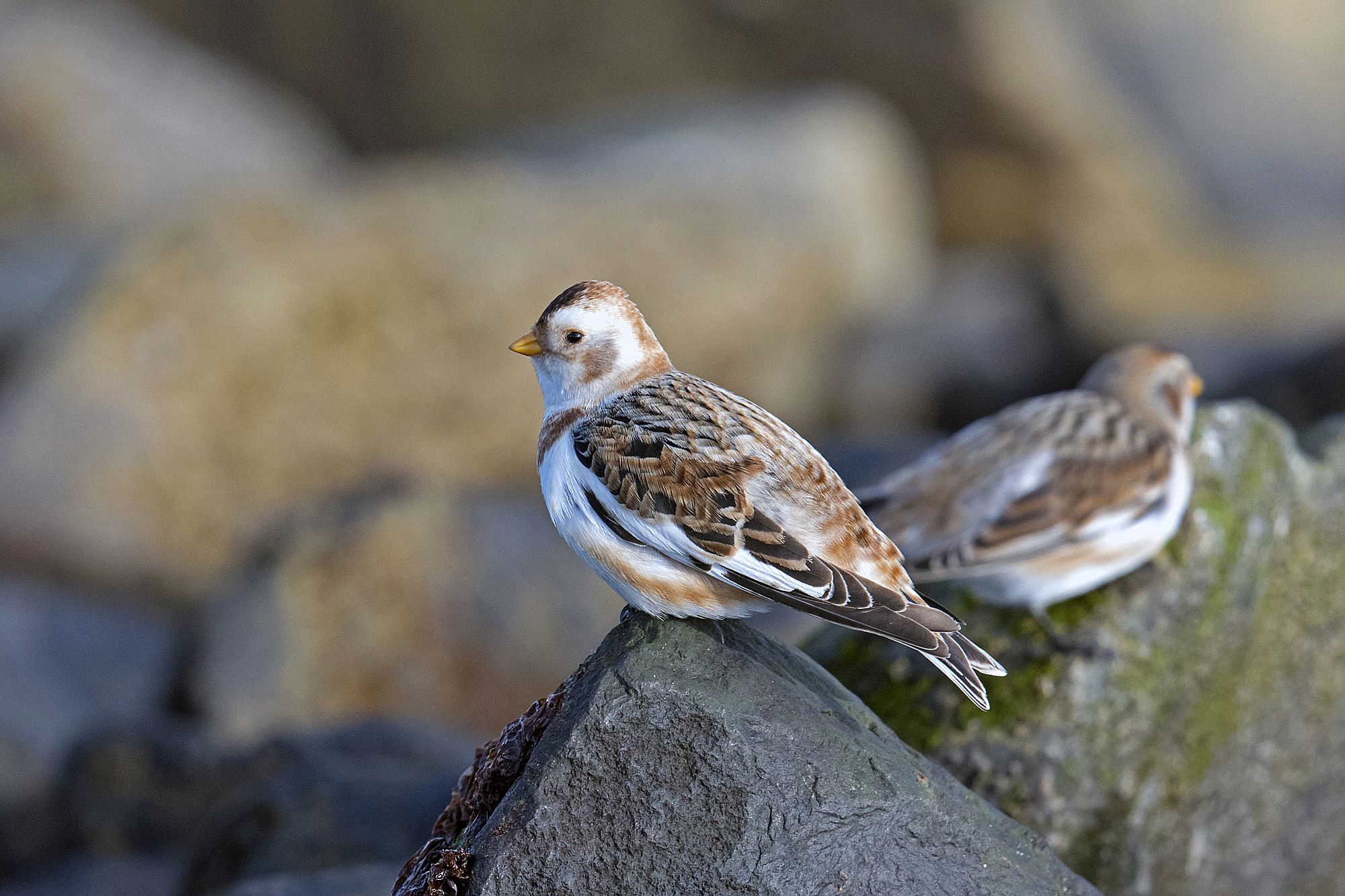
Outside the breeding season, which is to say – in winter, males and females look alike, with both being largely reddish-brown.
CC0 Public domain
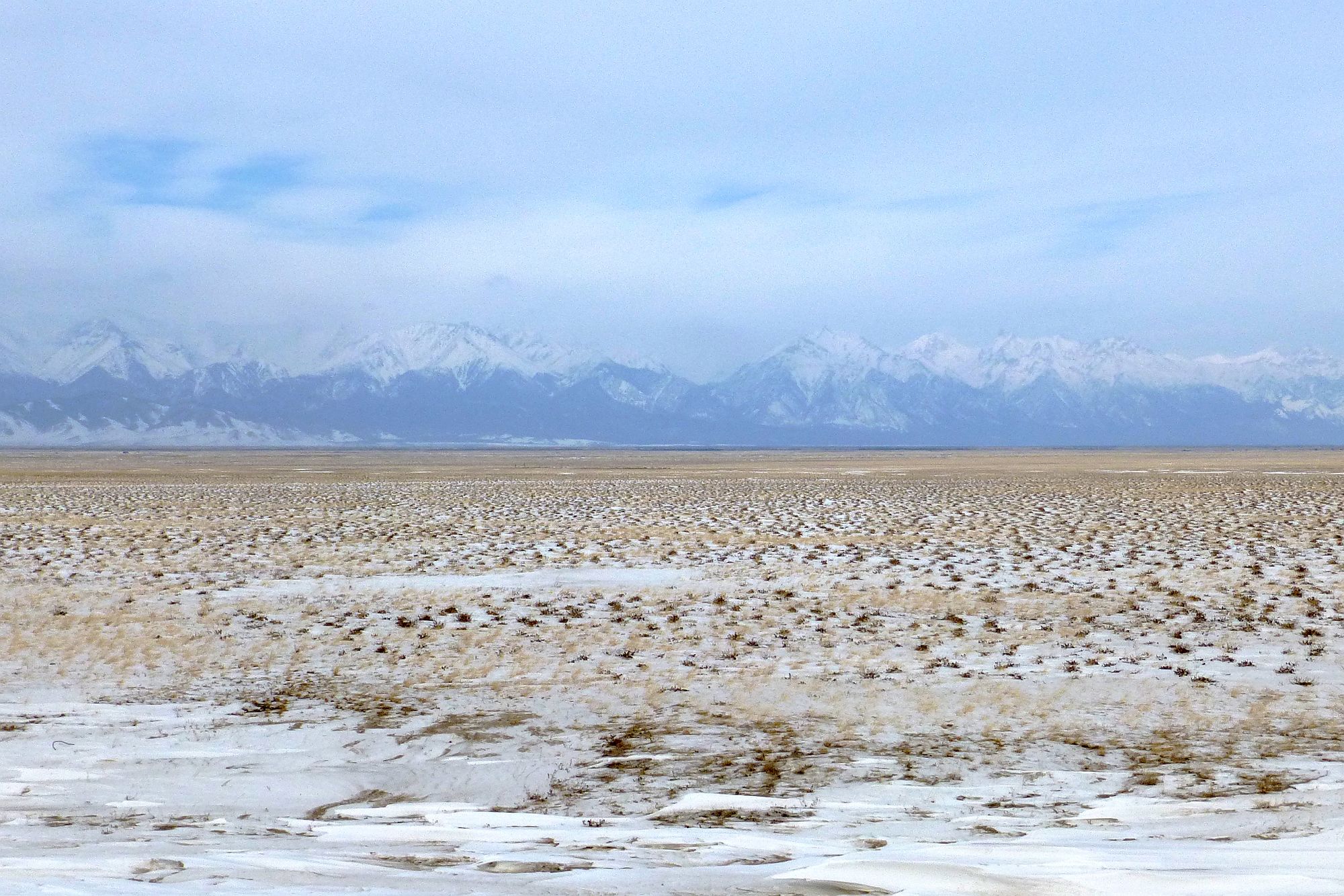
The winter colouration of the snow bunting makes a lot more sense when we realize that Siberia in winter, although always cold, may not always be white.
© Barbara Jóźwiak
What’s interesting is that, from the point of view of the snow bunting, Svalbard offers not only favourable temperatures and attractive foraging opportunities, but also light regime necessary for the birds to breed, because outside the polar day zone the species is physiologically unable to enter a state of reproductive activity. But why are snow buntings the first to return to the Arctic? Scientists claim that their arrival schedule is due to strict housing requirements, which are easier to satisfy when competition is not yet too intense. The key criterion by which snow buntings select their territories is the availability of rocky crevices deep enough to keep the female and the chicks safe from predators. There is, therefore, no room for blunders and a few weeks’ delay would mean that the search must be carried out with six million other birds milling around. Luckily, in late March and early April the islands are still conveniently empty and snow buntings may look for suitable nesting sites undisturbed. And because rocks and boulders are common in Svalbard, nests can then be found pretty much everywhere: close to the coast and far inland, on flat stretches of tundra and steep mountain slopes, in the lush neighbourhood of crowded bird cliffs and even – as stated by the Norwegian Polar Institute – on top of barren and empty nunataks.
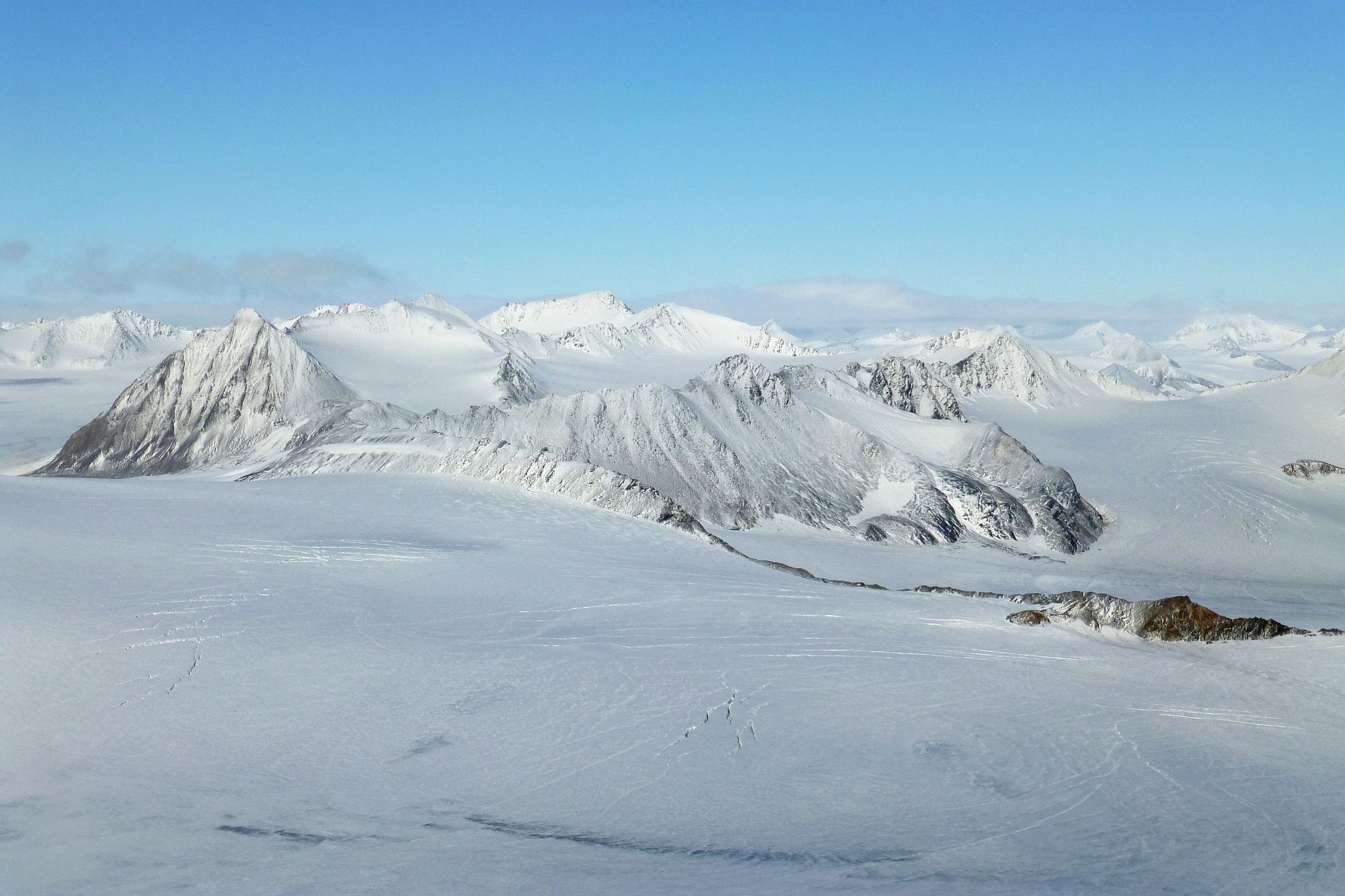
Nunataks are rocky mountain tops or ridges poking out of the surrounding glacier.
© Barbara Jóźwiak
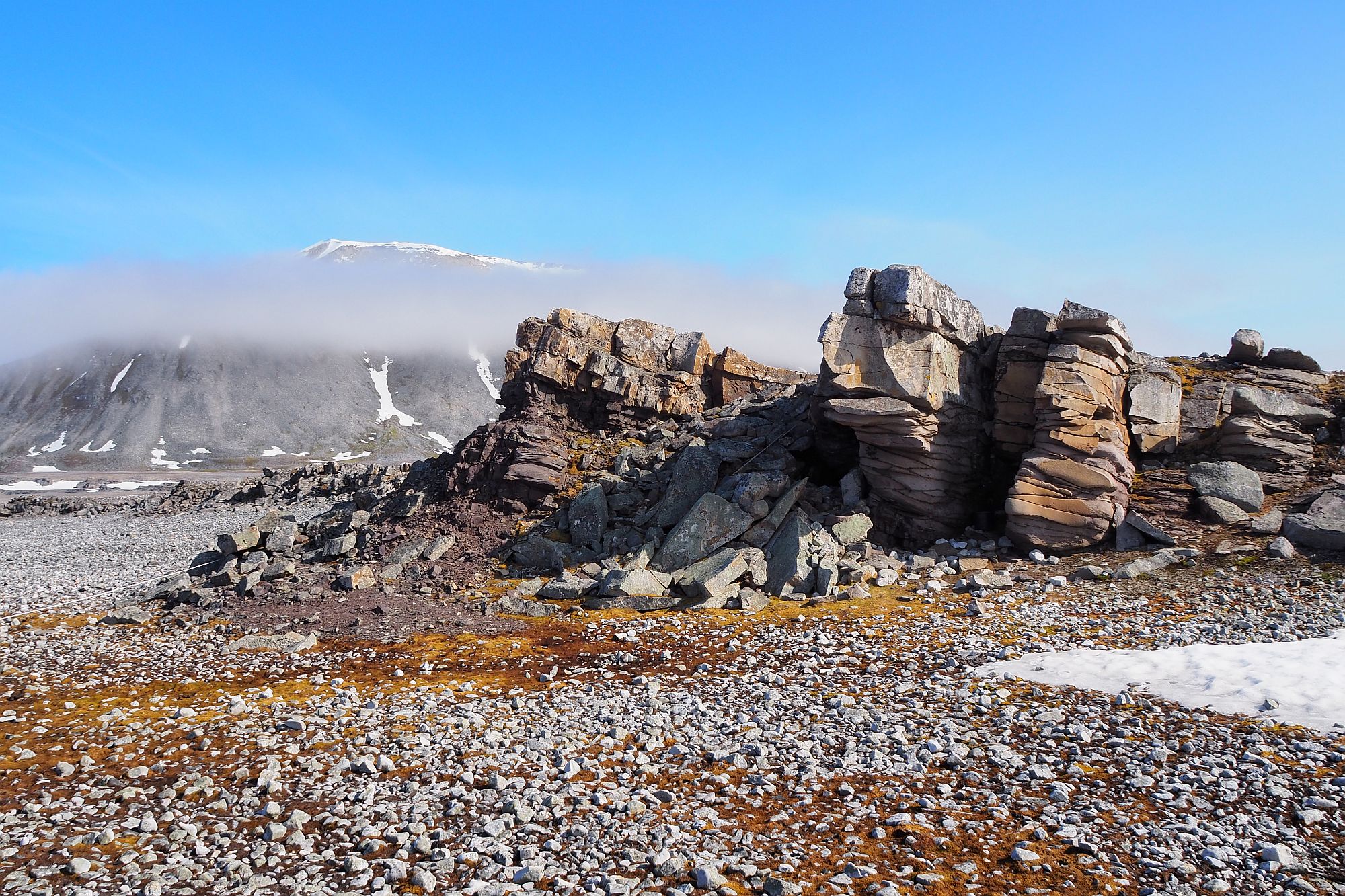
Instead of nunataks, most snow buntings go for a little less isolated, but still relatively safe rocky outcrops, like this one.
© Barbara Jóźwiak
Responsible for securing appropriate nesting sites are the males and it’s them that arrive in Svalbard first. Even though they overwinter and migrate in flocks (which sometimes number into the hundreds), the prospect of the approaching breeding season changes their attitude to fellow males. Snow buntings become less sociable and, if need be, spare no effort to defend their territories against intruders. It is worth noting, however, that in Svalbard territorial disputes (common among snow buntings nesting in other parts of the Arctic) are a rarity. Males are known to forage in the same area without conflict and if they do fight, it’s usually over females, which join them on the islands a month later. By then, the Arctic winter is already in retreat and conflicts over prime territories – definitively settled
To attract the attention of potential partners, males greet them in the so-called breeding plumage, but although among birds a seasonal change of image is a typical phenomenon, snow buntings acquire their breeding colouration in a not-so-typical way. Instead of shedding and regrowing their feathers (a process known as moulting), snow buntings rub against the snow, wearing off the reddish-brown of their outer feathers to reveal the elegant white underneath, which sharply contrasts with the black of their backs, wingtips and central tail feathers. The final touch to the minimalist breeding look is the bill, which also changes its colour from orange-yellow to black. Thus transformed males engage in acrobatic and vocal displays, based on which female snow buntings judge, among others, their parental care qualities. The approach, which may at first seem a little misguided, is in fact anything but, because singing (which takes a lot of energy) is a pastime males can indulge in only when they’re not busy looking for food. Frequent concerts are, therefore, a clear indication of high foraging efficiency, which bodes well for the female and the future chicks. It is not, however, enough for the male to look good and sing often. Females will also asses the merits of rocky nooks and crevices selected by males as potential nesting spots. Only if in this respect things are also to the female’s liking will the birds pair up for the duration of the breeding season.
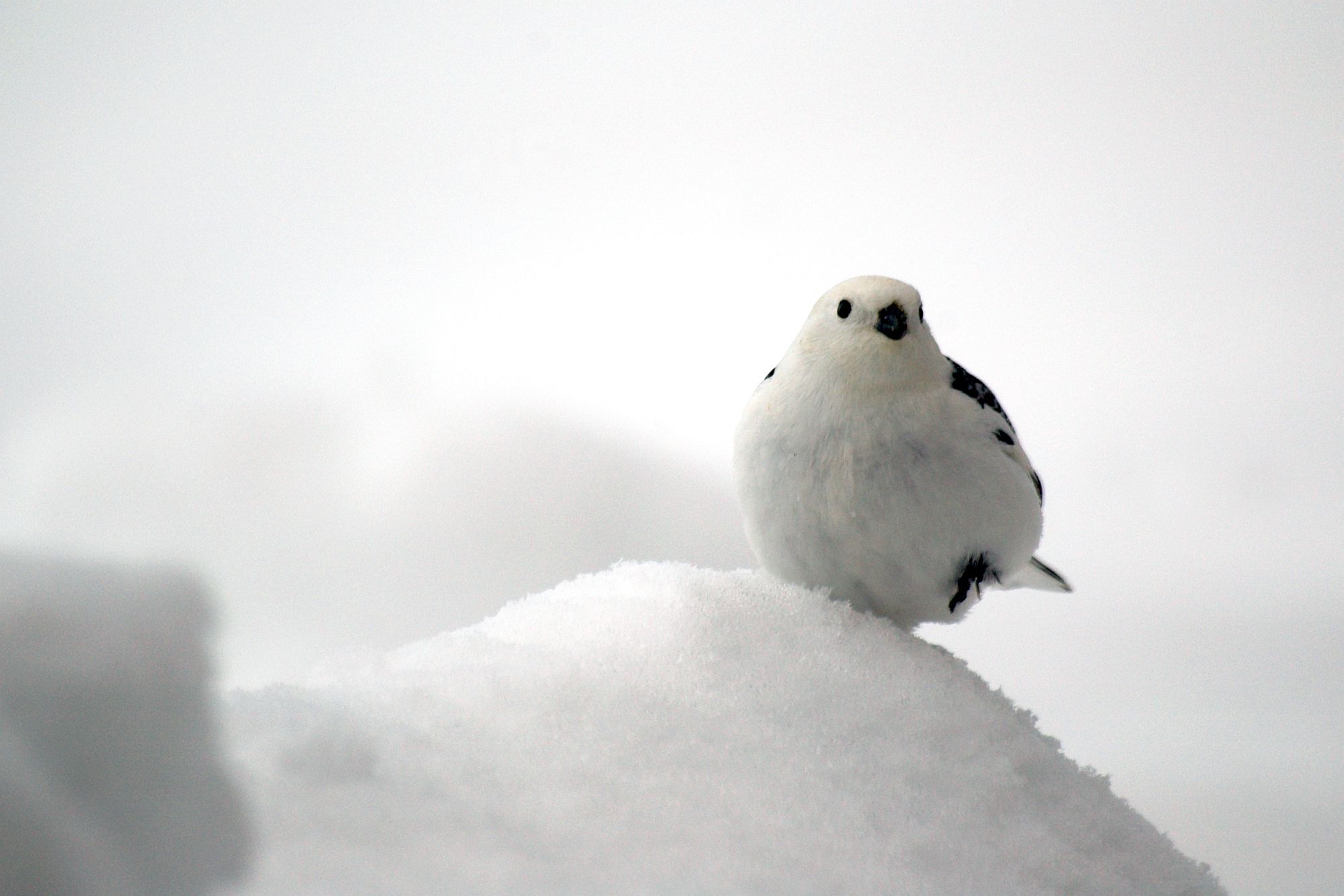
During the breeding season, snow buntings are a lot less colourful than in winter.
© Adam Nawrot

Snow buntings are not overly shy with people, which means they are easy to observe from up close.
© Barbara Jóźwiak
As is the case in most bird species, the nest is built by the female. Used for the purpose are bits of moss and grass, roots, winter fluff shed by Svalbard’s mammals and feathers. Between late May and early June, the female lays 5–7 eggs, which hatch in just under two weeks. The thing is, however, that embryos need warmth to develop and rocky crevices, although relatively safe, are not particularly cosy. And so, to protect the eggs from the cold, females hardly ever leave the nests, an approach greatly facilitated by the males’ eagerness to feed them. In some parts of the Arctic, the male pops in with a snack every fifteen minutes. In Svalbard, however, such frequent visits would likely pose risks of their own, as the comings and goings of the male might draw the attention of predators, such as the Arctic fox (Vulpes lagopus), whose summer menu consists mainly of birds and eggs. For this reason, snow bunting males, whose summer colours are fairly conspicuous, feed their partners less frequently. This means that females (which blend into the background much better) must every so often leave the nest to forage on their own. The strategy undoubtedly extends the incubation period, but – bearing in mind the nature of local hazards – it nonetheless contributes to the birds’ reproductive success.
For the first fortnight of their lives, the hatchling stay in the nest. At this stage, the parents feed them mainly (and according to some sources – exclusively) with insects, which in Svalbard, where insects are in short supply, must be a serious challenge. And while it may seem that two weeks is not yet the end of the world, the following period is not at all less demanding. Not only must the parents provide full board for their numerous – and voracious – young for another 8–12 days, but they must also gain weight themselves. After all, it’s already July and in September snow buntings will begin their journey back to Siberia, located a good few thousand kilometres away. To boost their chances of reaching their destination, before setting off the birds should increase their body mass by at least 30%. And it’s not just because completing the journey will require extra fat reserves, but also because – as claimed by scientists – in well-fed individuals the inner compass, which lets them travel in the right direction, works far more accurately. If this wasn’t enough of a headache, in July adult snow buntings go through a moult, which proceeds so rapidly that the birds temporarily lose their ability to fly. Great as they do on the ground, this brief indisposition undoubtedly makes them more vulnerable to predation. Still, even such an accumulation of hardships does not change the fact that snow buntings enjoy uncommonly high reproductive success. So much so, in fact, that their population ought to steadily grow. And yet it doesn’t. According to the Norwegian Polar Institute, snow buntings of Svalbard show marked fluctuations in abundance (which is typical of birds of that order) with no clear trends to be noted. On a global scale, however, the population size of these birds displays a worrying downward tendency. A report published in 2016 by Partners in Flight informs that the American, which is to say – the most numerous population of snow buntings dropped in size by almost 40% in 45 years.
Responsible for this decline are, to an extent, climate changes, which put the breeding behaviour of the snow bunting out of sync with the bird’s Arctic environment. It seems, however, that a more pressing issue for the species is – and this might come as a surprise – the indiscriminate use of insecticides. Especially the so-called neonicotinoids, which are neuro-active insect-killing substances commonly used by farmers around the world, including on croplands where many snow buntings spend the winter. If neonicotinoids make the headlines, it’s usually in the context of mass bee die-offs. They have long been known, however, to be highly toxic also to many bird species, like the snow bunting, and to pose a major threat to biodiversity in general. Unfortunately, there is still no environmental loss too great for big business to accept and there’s nothing at all to suggest that this case will be different.
Sources:
- American Bird Conservancy (2021-01-01) Snow Bunting [blog post]
- Coan, K. E. D (2021-10-06) Surprising discovery in Arctic songbird may reveal how it survives challenging migrations [blog post]
- Hofstad, E., Espmark, Y., Moksnes, A., Haugan, T., Ingebrigtsen, M. (2002) The relationship between song performance and male quality in snow buntings (Plectrophenax nivalis). Canadian Journal of Zoology, 80(3), 524–531
- Hoset, K. S., Espmark, Y., Lier, M., Haugan, T., Wedege. M. I., Moksnes, A. (2009) The effects of male mating behaviour and food provisioning on breeding success in snow buntings Plectrophenax nivalis in the high Arctic. Polar Biology, 32(11), 1649–1656
- Norwegian Polar Institute (?) Wildlife in polar regions: Snow bunting (Plectrophenax nivalis) [blog post]
- Ryzhanovsky, V. N. (2015) Comparative Ecology of Horned Lark Eremophila alpestris flava Gm. and Snow Bunting Plectrophenax nivalis L. in Subarctic and Arctic Zones. Contemporary Problems of Ecology, 8(3), 309–316
- Sandberg, R., Bäckman, J., Ottosson, U. (1998) Orientation of snow buntings (Plectrophenax nivalis) close to the magnetic north pole. The Journal of Experimental Biology, 201 (Pt 12), 1859–70
- Snell, K. R. S., Stokke, B. G., Moksnes, A., Thorup, K., Fossøy, F. (2018) From Svalbard to Siberia: Passerines breeding in the High Arctic also endure the extreme cold of the Western Steppe. PLOS ONE, 13(9)
- Swick, N. (2019-01-08) Are snow buntings North America’s hardiest songbird? [blog post]

The article was written as part of EDU-ARCTIC.PL project, funded by the Polish Ministry of Science and Higher Education (DIALOG programme).


